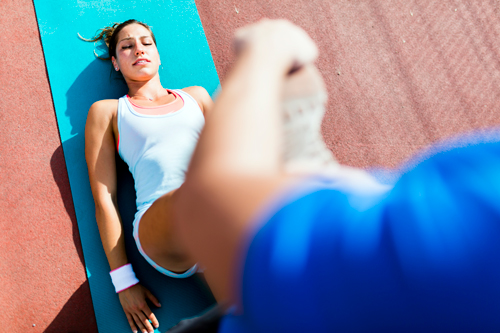
You may have sprained your ankle several times during the past year and often feel a sensation of weakness, as though you are in danger of spraining it again. When you have had one sprain, other sprains may follow, indicating the presence of a condition called chronic ankle instability. Is there a way to make it feel normal for good? The ankle ligaments, rope-like bands of tissue that connect the bone as,re unstable. Those on the outside of the ankle are most often affected when the ankle abruptly rolls to the outside of the foot (called an inversio n sprain). The less common but just as damaging eversion sprain occurs when the ankle rolls to the inside. A sprain occurs when you lose your balance, your ankle turns and the ligaments are stretched or completely torn. If the ligaments do not heal fully before you face another situation in which a sprain might occur, they will be more susceptible to injury or completely torn, thus perpetuating the cycle of instability.
After prompt treatment of the initial sprain with PRICE (Protection, Rest, Ice, Compression and Elevation), physical therapy can begin, including
- massage, compression and elevation to reduce swelling
- active and passive techniques to regain lost range of motion\
- gentle strength-training exercises to strengthen the peroneal leg muscles adjacent to the injured tendons and offer more control over the full ankle joint
- exercises to help regain proprioception, or “position sense,” using the nervous system to instinctively sense when your ankle truly is and is not stable
- exercises to normalize walking patterns and improve balance
A heel wedge can prevent the ankle from turning in or out; a plastic ankleb ra ce can prevent unsteadiness, as can ankle taping. Even high-top snea kers provide some stability. Wearing high heels is not recommended for women with ankle instability. Once swelling subsides and you can move your ankle, we can design a series of exercises to minimize the risk of additional sprains and help prevent falls. We can assess your situation and begin therapy to achieve the best outcome.









